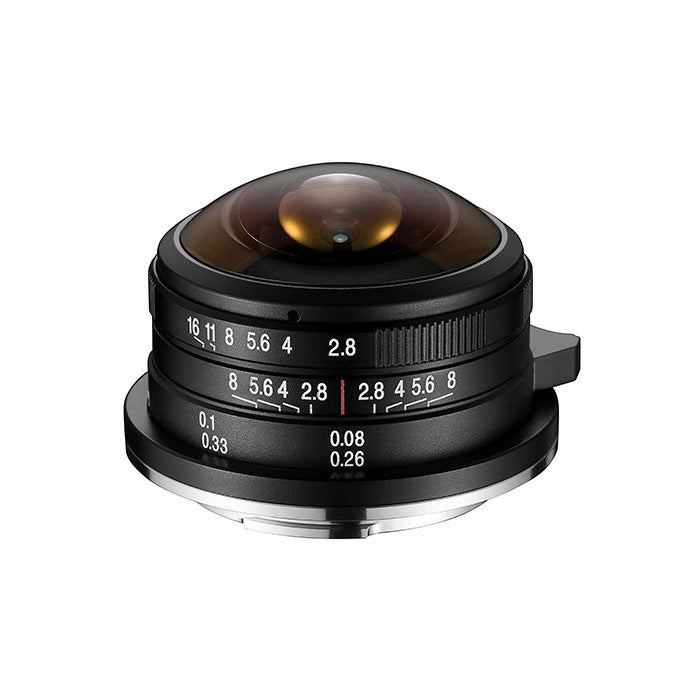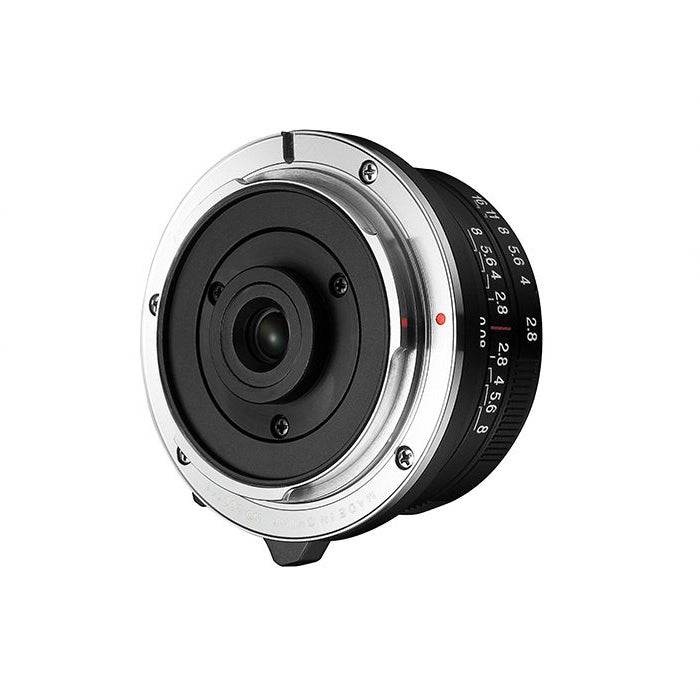Product Description
Laowa 4mm f/2.8 Fisheye Lens: Unleash Your Creativity with an Unprecedented Perspective
Capture the World in a Whole New Way
Discover the unique power of the Laowa 4mm f/2.8 fisheye lens, designed for photographers who dare to see beyond the ordinary. Featuring an extraordinary 210° field of view, this lens creates a mesmerizing circular fisheye perspective on Micro Four Thirds (M43) and APS-C cameras. With just 2-3 shots, you can create a stunning 360° full panorama image that showcases the world from a completely new angle.

Light, Compact, and Always Ready for Adventure
Weighing in at just 4.8 oz (135 g), the Laowa 4mm f/2.8 is as portable as it is powerful. Its compact design allows you to carry it in your pocket, making it the perfect companion for any photography adventure. Whether you're capturing the bustling cityscape, the tranquility of nature, or the excitement of a sporting event, this lens ensures you’ll never miss a moment of creativity.
A Game Changer for Drone Photography
Take your aerial shots to the next level! The Laowa 4mm f/2.8 lens can be mounted on DJI Inspire X5 cameras, providing an unrivaled perspective that will transform your drone footage. Create breathtaking visuals that stand out from the crowd with a unique angle that’s never been seen before. Say goodbye to the limitations of traditional selfie sticks and enjoy an immersive, full-featured experience.

Perfect for Every Creative Endeavor
From vlogging and skateboarding to virtual tours and VR imaging, the Laowa 4mm fisheye lens adapts to every creative need. Its expansive field of view and versatile functionality make it ideal for:
- Selfies and Vlogs: Capture yourself and your surroundings in one unique shot.
- 360° Panorama: Create seamless panoramas with minimal shots.
- Virtual Reality: Produce immersive VR content with outstanding clarity.
- Aerial Shots: Elevate your drone photography with a perspective like no other.
The only limit is your imagination!
Exceptional Performance in Low-Light Conditions
Don’t let the small size fool you. The Laowa 4mm f/2.8 lens is equipped with a fast maximum aperture of f/2.8, allowing more light to enter for brilliant shots even in low-light conditions. Whether you're photographing a star-studded night sky or capturing city lights, this lens adds a creative twist to traditional astrophotography and nightscape shots.

Get Closer, Capture More
With an incredibly close focus distance of just 8cm (3.1 inches), this lens allows you to get up close and personal with your subject. Highlight intricate details and create fun, exaggerated shots with the distinct fisheye distortion. From playful portraits to quirky animal photos, you can experiment with perspective and let your creativity run wild.
Stunning Sharpness, Unmatched Clarity
Experience sharpness like never before. The Laowa 4mm f/2.8 fisheye lens delivers impeccable image quality, not just in the center but all the way to the edges. This remarkable clarity is perfect for de-fishing images to achieve ultra-wide-angle shots or for creating ultra-high-definition content. Even when using the lens on a Blackmagic Pocket Cinema Camera in HFR HD Crop mode, the results are crisp and clean, transforming your footage into stunning ultra-wide scenes.

Simplified Panorama Creation
Thanks to the ultra-wide 210° field of view, you can easily create a full 360° panorama using just 2-3 images, compared to the 6 or more typically required with conventional fisheye lenses. This makes the Laowa 4mm f/2.8 the go-to lens for VR photography and virtual tours, enabling you to capture every detail with precision and ease.
Unlock New Creative Possibilities
Whether you're a professional photographer looking to push the boundaries of your craft or an enthusiast eager to explore new creative avenues, the Laowa 4mm f/2.8 fisheye lens is your gateway to a world of endless possibilities. Its compact size, versatility, and exceptional performance make it an essential tool for anyone looking to see – and capture – the world differently.
Ready to redefine your photography? Get the Laowa 4mm f/2.8 fisheye lens and explore the limits of your creativity.

Order now and start creating images that go beyond the ordinary!
Payment & Security
Your payment information is processed securely. We do not store credit card details nor have access to your credit card information.




















